Abstract
The Tankwa Karoo forms part of the Nama Karoo Biome, a biologically distinct area and the world’s only entirely arid region diversity hotspot. The purpose of this study was to determine whether the preponderance of a specific language of vernacular architecture adds cultural significance to the natural heritage of the Tankwa. The research scope is defined geographically by the limits of the Tankwa Karoo basin, by means of a case study analysis of four sites. Three sites, namely Uintjiesbos, Waaikop and Prambergfontein are located within the Tankwa Karoo National Park and another site, that is Gemsbokfontein is situated on a privately owned farm to the south of the Park. The heritagescape methodology framed the research objective. Dry-packed stone kraals, built by transhumant herders, and later vernacular architecture of adobe and stone with brakdak roofs define a built heritage that provides effective shelter in an arid climate. The study uncovered the intangible cultural heritage embodied in the act of building these structures and concludes this constitutes a living heritage worth preserving in an evolving contemporary society. The craftsmanship of these structures’ construction and scheduled maintenance support knowledge of net-zero energy construction methods. The local continuation of this living heritage is at a critical juncture and in need of developmental support. Skills transfer to craftsmen in the Tankwa Karoo is vital for the survival of these structures in the TKNP, currently falling to ruin since they are unoccupied and not maintained. Educational support for the continuation of this living heritage, will reciprocally inform the global body of knowledge for building in dryland environments. The research concludes that the layers of significance of both tangible, natural, and cultural heritage found in the Tankwa Karoo constitutes sufficient criteria for classifying this area as a continuing cultural landscape as defined by the terms of the UNESCO Convention for World Heritage of 1992.
Keywords: Tankwa Karoo; vernacular architecture; brakdak; continuing cultural landscape; intangible cultural heritage.
Introduction
The Tankwa Karoo is located on the south-western edge of the Great Karoo. It is bounded to the west by the Swartruggens and Cederberg Mountains and to the east by the Roggeveld escarpment. The north-western boundary is the Onder Bokkeveld district near Nieuwoudtville and the Hantam Karoo near Calvinia in the northeast. The south entrance is defined by the Karoo Poort valley, about 50 km north of Ceres (Figure 1). Here, the tarred road ends and the R355 dirt road continues for 225 km to Calvinia. It is the longest uninterrupted stretch of dirt road in South Africa, infamous for its reputation of ruining vehicles’ tyres. It is not advisable to travel to the area by normal sedan vehicle. The area is well described on a map by Pete Slingsby entitled: ‘Tankwa Karoo and the Roggeveld escarpment’ (2018) which remains an important navigational tool in an area still today without mobile phone reception. The word Tanqua or Tankwa is of Khoi origin and is a variant of Sanqua or Sankwa which refers to the San or Bushmen considered to be the first residents of the area (Raper 1987). ‘Karoo’ is of Khoekhoen origin, ‘kuru’, which means ‘hard, dry, sparse place’ (Raper 1987). Because the origin of the name is Khoi, there is speculation that it may be one of the oldest place names on earth. Similar records for the name Karoo exist in other languages such as Xhaeruh (Khoi), Carrow, Carro, Karow, Karró and Karroo (Afrikaans). The Nama words garo (to be dry) and !garob (dry desolate waste) also relate to Karoo (Nell 2008).
 |
FIGURE 1: Map of the study area with aerial image, main roads and places. |
|
The Tankwa Karoo forms part of the Nama Karoo biome, a biologically distinct region and the world’s only entirely arid diversity hotspot (Mucina et al. 2006). The Tankwa Karoo is an archaeologically significant area. Surveys conducted in 2014 by Hallinan and Shaw on a 30 km stretch of the Tankwa River identified over 7000 artefacts at 45 locations. They state that one of these sites contained the largest assemblage of Middle Stone Age artefacts found thus far from open-air or rock shelters in the Western and Northern Cape (Hallinan & Shaw 2015). Transhumance was initially practised by Khoi and San hunter-gatherers (Sadr 1998). In 1978, Smith and Ripp supported the theory that the Karoo was one of the routes for the introduction of domestic animals to the Cape around 2000 years ago. Their archaeological studies at the confluence of the Doorn and Tankwa Rivers at a site near Aspoort point towards this region as part of the transhumant passage of herders from the Cape region (Smith & Ripp 1978).
The preponderance of a specific form of vernacular architecture in this landscape adds another layer of cultural significance to the rich natural heritage of the greater biome. During frequent travels to our farm in the Tankwa Karoo, visits to other local farms and research in the Tankwa Karoo National Park (TKNP), I recorded a proliferation of brakdak, mudbrick and stone vernacular buildings and kraals. A brakdak house is a vernacular building with a flat, sloping roof built up of beams over which a layer of reeds is placed. It is sealed with brak (brack) clay soil that has a high salt content. The salty soil makes the roof relatively watertight. These houses are typical examples of working-class farm homes of the late 19th and early 20th century (Fagan 2008).
The brakdak buildings all look similar across the Tankwa Karoo. This is because the physical constraints of the natural materials used (clay, stone and mud) in response to the harsh natural environment found its expression in a particular architectural language. The buildings are rectangular, extended in the length of the building, and the depth is normally between 4.5 m and 5 m. Beams had to be sturdy and spans were limited because of the heavy weight of the brak. With later additions, imported materials such as galvanised steel made it possible to add rooms in the depth of the plan. Thick mud-brick walls (400 mm–500 mm thick) and low ceilings further defined the brakdak aesthetic. Large openings for windows were not possible – lintels were either spanned with large, flat stones or heavy wooden beams, both in short supply in the Tankwa. The heavy walls with small openings are extremely comfortable abodes in a climate characterised by large seasonal, sometimes diurnal, temperature shifts. The thermal mass stored in the thick clay walls and roofs ensures a constant temperature inside. Small windows provide soft, filtered interior lighting, a necessary respite from the outside glare. The beauty of these buildings lies in their simplicity and the ingenuity of their makers to fashion functional, yet comfortable accommodation with limited means. The brakdak houses connect visually with the flat valley landscape framed by two mountain ranges.
The Tankwa Karoo heritagescape study area was defined by four sites (Figure 2). These are Gemsbokfontein (Koppieskraal farms) in the south-west, and three historic farmyards (Uintjiesbosch and Waaikop towards the south of the park, and Prambergfontein in the north-central area) in the TKNP. The Uintjiesbos and Waaikop sites are in close proximity and are connected historically, as some of the same families occupied and built the houses on both sites (Strauss 2008, 2009). The vernacular architecture, history of occupation and the people who historically inhabited or still live on the sites inform the heritagescape framework. The vernacular structures recorded on these sites paint a vignette of the history of settlement in the Tankwa Karoo. The collective recorded histories span a period from the late 18th century until today. Physical traces of an even deeper history of transhumant, hunter-gatherer occupation, such as at Waaikop, build upon a shared, overlapping history. Further archaeological studies may reveal more traces of this historical layering.
 |
FIGURE 2: Map of the Tankwa Karoo National Park with broad study sites outlined in orange and farm sites in green. |
|
The study concludes that these structures constitute a tangible heritage that adds a layer of cultural importance to the region and supports its recognition as a significant cultural landscape. In the context of an evolving contemporary society, it is vital that the act of building these earth and stone structures be preserved to provide meaningful insights into the cultural, living heritage of the landscape.
Groote Gemsbokfontein was marked as an outspan on the Tulbagh divisional map of 1871 (Watermeyer 1871). Outspan sites were part of the Trekboer migration route through the Tankwa and farms were registered as such on the divisional maps. They supported the seasonal movement of stock in the Tankwa. Outspans were declared public places of rest near a fountain, where animals were rested and watered, and were allowed to graze freely. Stock farmers were allowed to stay for a maximum of 24 h. Certain farms were designated as ‘outspans’ and were rented out by the government at a reduced rate in exchange for the upkeep and accommodation at the outspans (Moll, Moll & Steyn 2021). The Ceres Divisional maps of 1901 mark a series of Outspan farms from Karoopoort at the southern access to the region all the way through the Tankwa basin to its northern edge (Watermeyer 1871). The old trade route to the Roggeveld that passed by the farmhouse until the late 1900s underscores its importance as a resting place on the historical migration route. Uintjiesbos and Waaikop are located here on the Renoster River. The path over the Ganagga Pass to the Roggeveld, recorded on a map of British explorer William Burchell’s travels in 1822, follows a similar route to the P2250 to Middelburg. The availability of water in this semi-desert determined resting places along the transhumant travel routes through the region and denoted nodes of significance where cultures connect. Preliminary evidence of the sharing of resources between the Trekboers and earlier Khoi or !Xam transhumant herders is shown at intersectional places such as on Quaggasfontein farm, previously an outspan farm, adjacent to the TKNP (Malan & Webley 2020).
Research methods and design
Garden (2006) described ‘The heritagescape’ (heritage landscape) as a methodology designed to analyse universal characteristics and elements that shape significance at a range of similar heritage sites. The theory argues that tangible structures can be better understood if read in relation to the intangible cultures associated with them, within the context of a landscape in which they are found. Sites and their built structures cannot be fully understood until all these factors are considered. As landscapes that take in both tangible and intangible elements, heritage sites are less well understood. Garden (2006) notes that because ‘heritage’ and ‘heritage sites’ are inextricably linked, a failure to comprehensively grasp how heritage sites work and what they ‘do’ over time will impact on our understanding of heritage as a social construction and will have a notable effect on the ways in which we understand how both heritage and heritage sites change and grow over time.
The study is framed by the heritagescape methodology, with reference to boundaries, visibility and cohesion. Boundaries are not only defined by the physical farm boundaries. Before the surveyed boundaries existed, the boundaries of possibilities for defining a living and working space that is affordable and reasonably comfortable in this extreme climate were drastically constrained. The land in this region bears fruit reluctantly and demands great effort from those who inhabit it, whether on a permanent or transient basis.
Cultural landscape theory, the vernacular and its relation to context
Tilley (2006), in his article on Identity, Place, Landscape and Heritage, gives an accurate description of the intertwined nature and impact of placemaking within a given landscape on social identity and heritage:
Social identity, myth, memory and meaning have their generative source in the lived experiences and sensory perception of people as they move in and through the water and on the land and observe and make sense of that which is already given. (p. 21)
The passage describes how people are shaped by the landscapes they occupy and the effect placemaking has on context. Landscape is continually changed by how a person occupies space and embraces the environmental realities and challenges imposed on them. When people personally undertake to build their home, using the means provided by the immediate context, the act of placemaking becomes intertwined with their concepts of meaning and identity:
When you build a thing, you cannot merely build that thing in isolation, but you must also repair the world around it, and within it, so that the larger world at that one place becomes more coherent, and more whole, and the thing that you make takes its place in the web of nature, as you make it. (Alexander, Ishikawa & Silverstein 1977:xiii)
Vernacular architecture by inference is thus both a personal and meaningful act of creation, and its effect on a landscape generates a genius-loci particular to that cultural idiom.
Because of the meaning that human beings attribute to place, Gfeller (2013) defines heritage as not merely a ‘thing, object or place’, but as ‘a social construct in which a material artefact, monument, site or cultural practice is endowed with meaning’. She illustrates how the concept of ‘cultural landscapes’ included in the United Nations Educational, Scientific and Cultural Organization (UNESCO) Range of world heritage categories in 1992 bridged the nature/culture divide of earlier manifestos. The notion of intangible cultural heritage was first introduced then, a decade before its adoption at the UNESCO Intangible Cultural Heritage Convention of 2003. The criteria established for cultural landscapes embodied ideas developed outside Europe by indigenous cultures with different socio-cultural values of living in a relationship with nature.
With the 1992 adoption of the concept of the cultural landscape by UNESCO, heritage areas with no important monuments could be nominated for inclusion in their list. Cultural landscapes are properties that represent the ‘combined works of nature and man’ as designated in Article 1 of the Convention. These properties illustrate:
[T]he evolution of human society and settlement over time, under the influence of the physical constraints and/or opportunities presented by their natural environment and of successive social, economic and cultural forces, both external and internal. (Jokilehto 2012:228)
Cultural landscapes as defined by (UNESCO 2008) fall into three main categories:
- Defined landscapes: These are designed and created intentionally by humans and constructed for aesthetic reasons.
- Organically evolved landscapes: These result from an initial social, economic, administrative, or religious imperative and developed into their present form in response to the natural environment. They reflect a process of evolution. There are two sub-categories of organically evolved landscapes namely: a relic/fossil landscape and a continuing landscape, which plays an active role in contemporary society, closely associated with a traditional way of life in which the evolutionary process is still in progress. It exhibits significant material evidence of its evolution over time.
- Associative cultural landscapes: These are justified by powerful religious, artistic or cultural associations of a natural element rather than because they contain material or cultural evidence. This category, with its recognition of the important role that indigenous people play in the context of these landscapes, marked a paradigm shift in World Heritage Convention thinking by introducing the notion of intangible cultural heritage, specifically associated with a place or site. The definition of cultural landscapes includes a rejection of beauty as a defining criterion while emphasising the importance of intangible cultural values.
The Tankwa Karoo, with its distinctive ecology and climate and its proliferation of vernacular mud and stone structures, fits the definition of an organically evolved landscape as defined in the UNESCO charter of 1992. The climate of this dry, semi-desert ecology historically necessitated a lifestyle of continuous migration for the survival of man and beast. This first record of occupation is by Middle and Later Stone Age peoples (Hallinan & Shaw 2015). These peoples lived a hunter-gatherer lifestyle continued by the San or !Xam (McGranaghan 2015). They were followed by transhumant pastoralists (!Ui Taa speaking ‘hunters with sheep’) or later Khoikhoi (Smith & Ripp 1978). Transhumant herders farmed primarily with hardy, indigenous species of small stock and utilised the limited grazing and water resources in a sustainable manner. They built stone kraals to safeguard their animals from predators at night, thus marking the migratory route through the area and up into the escarpments. This heritage of ‘trekking and kraaling’ was appropriated and adapted by later colonial migrant farmers (Trekboers), who settled in the region (Regensberg 2016). The practice was learnt from their Khoi and San labourers, who from the early 1800s onwards increasingly ended up as herders and shepherds on colonist-owned farms (Penn 2005, Amschwand 2017). The farmers continued the practice of building stone kraals and later built houses once the migration to winter pasturage on a legplek (winter grazing) farm in the Tankwa became an annual tradition (Amschwand 2016). Maguire (2008) discusses the occurrence of certain vernacular building typologies in specific areas of the Karoo, on geological grounds. The profusion of mud and stone buildings in the Tankwa basin is because of the regular availability of stone in the Karoo. The abundant flat turbidite rock in Tankwa made rock as a building material, a logical choice both for housing and utilitarian structures such as sheepfolds (kraals).
The local indigenous craftsmen’s skills at building basic stone kraals were augmented by knowledge of clay and stone construction imported from Portugal, Spain and England (Van Zyl 2003). The skills were taught to the labourers on the farms, many of whom were of Khoi origin. In this manner, the intangible heritage of the respective building crafts was developed and enriched by the overlay of new cultures and their contributions to the existing skill base.
Locally available materials were used to build a range of vernacular houses on farms, most notably the distinctive brakdak houses and the more regionally common Karoo-style whitewashed pitched roof houses (Walton 2007). The brakdak house with either stone or mudbrick walls and the more developed construction techniques for the larger rectilinear kraals of the colonial era have become iconic symbols of life in the Tankwa Karoo. Built from locally available resources, they are economically and environmentally sustainable responses to life in this extreme climate. The excellent thermal mass of these brakdak houses ensures that they are cool in summer and warm in winter, making them an eminently appropriate response to the challenges presented by climatic extremes. These built structures have shaped the landscape, in as much as they were fashioned from them, and in time became prominent visual anchors within the Tankwa Karoo cultural landscape. This landscape is continuously evolving, as some of the houses are modernised and developed as guest cottages for tourists with some new tourist accommodations constructed along similar principles. In the same manner, the crafts to build and maintain these structures, the materials used and construction details are continually evolving to accommodate contemporary needs related to servicing and maintenance.
This premise is illustrated by means of the research on four sites in the Tankwa Karoo: three are vacated old loan farm sites in what is now the TKNP and the fourth is located on a private farm known as Koppieskraal Boerdery, some distance south of the TKNP.
The Tankwa Karoo National Park
Boundaries
The TKNP is found to the north of the Tankwa Karoo Basin and straddles the Northern and Western Cape provincial borders. The Park comprises an area of 146 373 ha, of which 138 570 ha is proclaimed as a national park. About 7806 ha (representing 11 farms) is in the process of being proclaimed and the balance of un-proclaimed land is privately owned, but contractually included in the TKNP (Strauss & Cowell 2015). Initially, the protected area began as a Scientific National Park in 1986, defined by the eight Crownland farms that collectively were 27 000 ha. Over time, 54 farms were added onto the original eight Crownland properties. Most notable was the additional 40 000 ha purchased by SANParks (South African National Parks) from the Strauss family in 1998 and the Oudebaskraal Dam farms that were acquired in 2009.
Prambergfontein
Prambergfontein is in the north-west section of the TKNP. Together with the two adjacent farms, that is, Blink Vley Vlakte and Volmoesfontein, these three properties were first registered to Nicolaas Johannes Pieterse in the 1920s as a cattle thoroughfare. By 1922, C. L. Pieterse was reportedly in control of these three farms (KAB ACLT 17:9487; KAB ACLT 17:9487/1; KAB:LND 1/658:L9751; KAB T 985:2463). The last known residents of the farm buildings at Prambergfontein, before its sale to SANParks, were the Pieterse family, who lived on the property for almost a century. The Pieterses ended up becoming sharecroppers for W. P. Strauss, brother of Oom Conrad Strauss (Moll, Moll, & Steyn 2021). The Spanish flu epidemic in 1918 coupled with an outbreak of African horse sickness and bad drought in the early 1930s put several farmers in the area under severe financial strain, forcing them to foreclose. Farms were sold by the Landbank, and Jacobus Gideon Louw Strauss, a lawyer in Calvinia at the time, bought several farms on these auctions. He allowed the original farm owners to remain on the farms and continue farming the land as sharecroppers (bywoners) (Strauss 2008, 2009).
The Prambergfontein site is located on the Blink Vley Vlakte Farm (Calvinia district Farm 108) (Figure 3). It was known as Spruit [fountain], in reference to a persistent natural spring on the farm (Strauss 2008, 2009).
 |
FIGURE 3: Aerial image of Prambergfontein (Google maps). |
|
Most of the buildings here are built of unfired clay bricks, called roustene in Afrikaans (Figure 4). The main house at Prambergfontein is a typical brakdak of the late 19th/early 20th century. There is no adornment: all rooms define spaces necessary for survival in this harsh terrain and was the original home of the Pieterse family. Oom Conrad Strauss describes the main house and adjacent buildings estimated to be 100 years old (2008):
All the buildings in the area are built with roustene (unfired clay bricks): they are made with a mixture of chaff and clay left in the sun to dry. There are no foundations for these walls. Because of that, the walls had to be rendered (afgewit - whitewashed) with a clay wash paint from the fountain every two years, to avoid the rising damp from the foundation level causing structural failure of the walls. Outside walls were thick, to keep the house cool on the inside. The walls get plastered with the same mix on the outside, to prevent rainwater from the roof running down the walls causing them to dissolve. (Strauss 2008, 2009:3) (Translation from Afrikaans by author)
 |
FIGURE 4: Prambergfontein buildings viewed from the fountain. Pramberg is to the right and the farm buildings are on the horizon to the left. |
|
He described the construction of the stone addition to the storeroom, where Gideon Paulsen stayed:
Gideon Paulsen, the last tenant, stayed in the house next to the garage just down from the main house. He didn’t have any chaff to build bricks with. Fine gravel was mixed with the clay for the bricks. One can clearly see the clay with which the walls were afgewit. The garage itself is only about 30 years old and is in a better condition than the other buildings. (Strauss 2008, 2009:4)
The farmyard buildings at Prambergfontein (Figure 4) are arranged linearly along the road from the Pramberg towards the fountain. A persistent spring at Prambergfontein determined the settlement location in this otherwise non-descript landscape. This fountain functioned as the main source of water, and the clay used in building and maintaining the houses. It was described by Oom Conrad Strauss as follows:
The fountain was a strong fountain and used to run out onto the ground. It had good drinking water and water for the animals. At the bottom of the fountain, they would find the clay used for plastering (painting) the buildings inside and out. They called it white clay (witklei) but there were different colours: cream and a pure white. The old house was still painted with this clay. (Strauss 2008, 2009:5)
The large rectangular stone kraal, located on a low hill about 700 m from the farmhouse, lends a strong monolithic presence to the landscape (Figure 2, Site 1). Kraals were often built at a slight elevation to enhance its defensibility from predators and thus provide strong visual clues to inhabited spaces in the area. They were generally constructed near the farmhouse to allow the farmer to keep a close watch over his flock at night.
The harsh existence on Prambergfontein is described by the poet Boerneef (IW Van Der Merwe-1897–1967) in his iconic poem, ‘By Pramberg blêr ‘n moflam’. It describes a desperate scene, in which a farmer must cull his entire flock of sheep, dying of hunger and thirst during a cruel drought. A moflam is Afrikaans for a merino lamb, commonly farmed here during the wool boom of the early 19th century. The Van der Merwe family, whose main residence was at Boplaas in the Koue Bokkeveld, had a legplaats (lay farm) at Karooruggens. The Pramberg was visible from their farm. Having spent many winters in this area, Boerneef penned a series of descriptive poems about the Seressekro and its people (Schall 2017). Looking at the current desolate landscape, it is hard to imagine that it could sustain farming activity. These crumbling, abandoned buildings remain the last tangible testament of the Pieterse family’s struggle against unimaginable hardship:
The Van der Merwe family was one of many farmers in the Koue Bokkeveld and Roggeveld who were allocated a legplaats farm in the Tankwa Karoo. From the early 19th Century colonial stock farmers in the Koue Bokkeveld and on the Roggeveld Escarpment learnt about transhumance (migratory pastoralism) from their Khoi herders (Amschwand 2016). Otto Mentzels’ 18th century observation in Van Der Merwe (1995) indicates that the trekboers of the Northern Frontier followed the same routes and herding practices of the earlier Khoi pastoralists. Lichtenstein, during his travels through the area in 1803–06, describe this seasonal migration:
‘Every colonist of the Roggeveld has, therefore, besides his proper habitation, a place in the Karroo, which is called a Legplaats, and for which no duty, as for a regular farm is paid to the government. Here a small house is erected, which at the beginning of spring is forsaken again, and remains empty and open. The drought begins to come on in September and October, when the family return to the hills where they commonly remain till May or June’. (Lichtenstein 1812:99)
Uintjiesbos and Waaikop farms
The farms Uintjiesbos (also Uintjiesbosch) and Waaikop are adjacent to each other in the south-central portion of the TKNP. The buildings are close to the P2250 gravel road. This route follows a similar course to the route travelled by the British explorer William Burchell in the early 1700s through the Tankwa Valley and over the Ganaggapass up to the Roggeveld escarpment (Figure 2).
I visited the Waaikop site on two occasions in July 2020 and again in April 2021. It has three areas of historical interest (Figure 5) namely, a transhumant herder site on top of the hill (Site 7), Waaikop main house and kraal (Sites 1, 2) and Petoors’s houses and kraal (Sites 3–6). The oldest site (7) is on top of the hill. The site has three cleared areas where boulders were moved away, possibly for a campsite. Here, Middle Stone Age stone artefacts mainly of hornfels were found on an archaeological reconnaissance trip by Wiltshire and Deacon in 2015, probably indicating a camping ground for migratory Khoi herders (Deacon & Wiltshire 2015).
 |
FIGURE 5: Aerial survey map of Waaikop site, with significant sites annotated by author. (1) Waaikop main house. (2) Waaikop stone kraal with the low wall up the hill. (3) Petoors main house. (4) Petoors kraal built of branches. (5) Threshing floor stone circle. (6) Remains of small house. (7) Site on the hill with evidence of earlier transhumant herder occupation. |
|
The Waaikop house (Figure 6 - Site 1 on Figure 5) and kraal (Site 2) are typical examples of a trekboer homestead. The house consists of a dry-packed stone, mud kitchen and one adjoining mudbrick room. Next to the house are two platforms, to the north and east. They are small kraals, likely for housing new-born lambs. A larger rectangular stone kraal is within walking distance from the house. Waaikop farm originally belonged to Gert Karsten. The farm was sold in 1932 to J. G. L. Strauss during the Great Depression in the 1930s. After the sale, Ockert Theron lived in the main house as a bywoner (sharecropper). The last known resident of the house before the farm was sold to J.G.L. Strauss in 1932, was a goatherd called Martiens Klein (Strauss 2008, 2009).
 |
FIGURE 6: Waaikop house: Stone kitchen section to the left and living room section to the right. |
|
The house was built by Frederik Petoors, Albert Petoors’s son (Strauss 2008, 2009). The neat construction attests to the skill of the craftsman that built it. Walls were built of the round stones located on site. Round stones require careful selection, dressing and placing to achieve sufficient bond for structural stability. The building was plastered with a clay plaster mix.
Further south, one finds the farmyard of the Petoors family (sites 3, 4, 5, 6 - Figure 5). Albert Petoors was the patriarch: he was a large, impressive man, married to a feisty lady of San (Bushman) descent. His sons, Jan, Frederik, Koos and Klaas also lived there (Strauss 2008, 2009). Albert was the first local person, after Shepherd, who made his own bricks. He understood English and learned his building skills from Richard Shepherd (who was a stone mason). Shepherd and his brothers came from England to the Cape Colony in the 1830s to work on the roads. The Shepherd family moved to the Lang Kloof (now within the TKNP) and settled there (Moll et al. 2021). The skills Albert learned from Richard were transferred to his sons: Frederik, Koos and Klaas. They were a large family, all builders by trade (Strauss 2008, 2009).
Farm 7 Uintjiesbosch was surveyed and described in 1872 (Watermeyer 1872). The site contains a number of farmyard buildings and a school, all in varying stages of disrepair. They were constructed between the mid-1800s and mid-1900s. Sixteen vernacular buildings were described in 2020 and their heritage significance was proposed and provisionally graded (Munting 2020). The site served as an important community node during the late 19th and 20th centuries as attested by the history of the community described by Oom Conrad Strauss (2008, 2009) and also by Maria Hanekom, schoolteacher at Skooltjie – the farm school located on the site (Hanekom 2012).
Frederik Petoors built most of the structures at Uintjiesbos, assisted by his brothers Koos and Klaas (Strauss 2008, 2009). The buildings are all a combination of either stonemasonry with clay infill, or sundried mudbricks with clay plaster. They had brakdak roofs, which were the only locally available material for roofing. Some buildings, such as Karsten’s and the teachers’ houses, show a combination of traditional brakdak with newer sheet-metal roofing. The buildings are arranged north and south of the Renoster River. This would have facilitated the irrigation of the planted fields to the north, visible in the aerial photo (Figure 7).
 |
FIGURE 7: Aerial map of Uintjiesbos site sourced from Cape Farm Mapper. |
|
There is a small graveyard near the teachers’ house. Most belong to the Karstens, Paulsen and Steenkamp families who all at some stage lived on Uintjiesbos (Personal observation: Site visit 2020). The graveyard was in use from the early 1900s, and most occupants were born in the late 1800s. After the sale of Uintjiesbos to J. G. L. Strauss in 1932, members of the Karsten family continued to stay on the farm as bywoners (sharecroppers), until the farm was incorporated into the TKNP in 1989 (Moll et al. 2021).
The rectangular dry-packed stone kraal, built by the first members of the Theron, Karsten and De Lange families, is possibly the oldest structure on site. It was likely built to house small stock for trekking during winter grazing periods (described by Lichtenstein) before the area became permanently occupied. Oom Conrad notes this was built by the founding families of the Therons, De Langes and Karsten’s families that later settled here (Strauss 2008, 2009). The large brakdak barn, built by Albert Petoors, remains one of the most sturdy and intact structures on site, despite its lack of maintenance (Munting 2020). The external mudbrick walls show weather damage as the mud plaster rendering has weathered off completely, but the protected interior walls are in remarkably good condition. The brakdak roof over the original barn section remains intact and was repaired by Oom Conrad sometime in the mid-1900s (Figure 11). The roof is built with thick, sturdy beams, date palm laths and date palm leaves as a ceiling. Date palms are not indigenous to the area but were and still are farmed extensively along the Tankwa River as evidenced higher up the Tankwa River, where farms remain commercially farmed. Remnants of a date palm plantation are still visible at Onderwadrift, an adjacent farm, probably planted by the Geldenhuys family who farmed here from the 1890s (KAB CSC 2/6/1/301:47).
The most prominent building is the farm school named Skooltjie, which also served as an occasional community hall (Figure 8). The school building was commissioned by J.G.L. Strauss (Oom Conrad’s grandfather) in the early 1900s for local white farm children (Strauss 2008, 2009). On my site inspection in May 2020, I concluded that this building was likely built by another builder from outside of the local community, because of the variation in building style and material use. The school has a sloping galvanised metal-sheeting roof, and the walls are built with semi-fired clay bricks, rendered with a limewash plaster. It was closed by the government in 1947, because of the depopulation of the area and the remaining children were relocated to Elandsvlei school. Maans Karsten then used it as a grain store. It was re-opened in the 1980s by Oom Conrad as a farm school for local labourers’ children. He converted what was previously a house for the teachers into a children’s hostel by adding a brakdak dormitory room and kitchen onto the original two-bedroom house. The school was closed in 1991 because of the drop in registered learners and the last children were enrolled at the new Oudebaskraal School (Hanekom 2012).
 |
FIGURE 8: Uintjiesbos site, with Skooltjie in the foreground. The Karsten’s brakdak house is visible on the right, with stables and the klipkraal on the far right. To the left is the barn built by Albert Petoors with the Roggeveld Mountains as a backdrop. |
|
The brakdak house below the school (Figure 8 - Site 9) was occupied by the Karsten family until the farms’ incorporation into the TKNP. It is an archetypal brakdak farmhouse, both in its rectangular plan, low height and simplicity of form. The house has two rooms, a main living space and a kitchen (Figure 9). There is a hand pump outside for water, which serves the surrounding community. North of the main house is a stone barn and a large rectangular dry-packed stone kraal built by members of the De Lange, Theron and Karsten families on the low hill overlooking the valley (Figure 10).
 |
FIGURE 9: Site 9 - Karsten’s brakdak house with the Roggeveld mountains as backdrop. The late afternoon sun paints the mud rendering in orange hues. |
|
 |
FIGURE 10: Site as seen from a corner of the large stone kraal (Site 16): The stables are in the foreground with Skooltjie to the left. The big barn on the mid horizon and the Karsten’s house to the right. |
|
To the south of the school, is a large mudbrick and brakdak barn (Figure 11). It was built by Albert Petoors and is one of the oldest buildings on the Uintjiesbos farm. The barn was used for shearing sheep and as a store by Oom Conrad (Strauss 2008, 2009). Maans Karsten later added rooms onto the north and east of the original barn, as his living quarters. There are three generations of Johannes Hermanus (Maans) Karsten buried in the Uintjiesbos graveyard, and it is very difficult to discern from the anecdotal evidence in the Strauss interviews which Maans Karsten occupied the various buildings at which stage (Oom Conrad passed away sometime after the interview, and the transcriptions of the 2008 and 2009 interview serve as only historical record). Suffice to say that a member of the Karsten family resided at Uitjiesbos from the late 1800s up until the 1980s when the farm was incorporated into the TKNP and buildings were left abandoned. Further north from the main buildings, along the Renoster River, is a dilapidated two-roomed brakdak and mudbrick house (see Figure 7, Site 16). This was the last home of Albert Petoors (Strauss 2008, 2009).
 |
FIGURE 11: The barn built by Albert Petoors. Maans Karsten later added more rooms to the left when it became his house. |
|
Koppieskraal farms (Gemsbokfontein, Klein Gemsbokfontein and a portion of Koppieskraal farm)
Boundaries
The study site is on farm 72 ‘Groote Gemsbokfontein’ in the Ceres Karoo section of the Tankwa. Koppieskraal Farms is comprised of three farms: Groot Gemsbokfontein, Klein Gemsbokfontein and a portion of Koppieskraal farming enterprise (see Figure 2). The latter was established by the seven Willemse brothers in 1997. Charles Willemse is the only remaining original shareholder of this farming enterprise and was interviewed by the author in 2021 (Willemse 2021). There are three housing clusters at Koppieskraal farms, namely, (1) the old Willemse family house and farm buildings, (2) the house of Jan Jollie (current resident - farm labourer) and (3) Michaels’ house and its farm buildings (Figure 12).
 |
FIGURE 12: Aerial map of Gemsbokfontein farm from Cape Farm Mapper, indicating the location of housing clusters (Image taken in May 2020). |
|
The Willemse house (Figure 13 - Site 6) was built approximately 130 years ago by Charles Willemse’s grandparents (Willemse 2021). Like many farmhouses of the Tankwa, it started as a small two-roomed building, with later additions as the family expanded (Figure 14). The house has a pitched galvanised metal roof with an attic space. Walls are of unfired mud brick, protected by limewash. The floor was likely originally of earth with dung rendering, later replaced with a concrete surface bed. The pitched roof is built in two sections with a parapet dividing them, indicating a later addition. A brakdak store adjoins the south of the house. A brakdak house (Figure 15) is directly east across from the main house. Charles’s sister and her family live there when visiting the farm. The brakdak house has a clay-brick oven outside to the east, whereas the pitched house has an internal fireplace. The internal kitchen and the metal pitched roof are historically more recent additions (see Figure 14) and suggest the brakdak house as the original homestead. To the south of the old house is a brakdak barn with a lime-plastered, clay-brick animal pen. This was constructed in the mid-1970s.
 |
FIGURE 13: Aerial map of the Willemse farmhouse complex with Jan Jollies’ house to the north. |
|
 |
FIGURE 14: The Willemse house. The central parapet wall line indicates a likely first addition, while the flat-roofed sections to the front were clearly a later addition. The flat section to the south (right in the photo) has a brakdak roof. It is used as a storeroom. |
|
 |
FIGURE 15: The old brakdak house on the right followed by the new brakdak barn. The old barn with the pitched roof and animal pen is to the left. |
|
Jan Jollies’ house is built with unfired mud bricks and plastered with a mixture of mud, straw and clay. This plaster is a cheap, protective wall finish, sourced locally on the farm. Lime plaster is more expensive as it must be bought. Hansie Kloete recalls this building being built in the 1980s by his father, Booi Kloete, who also helped build and maintain the Willemse house (Jacobs et al. 2021). The house has a corrugated iron roof over the whole structure, but the roof sheeting on the back section has a low fall. A layer of brak was added on top for insulation (Figure 16). Walls are re-plastered regularly for maintenance purposes. The walls facing the direction of the predominant rain and wind (north and west facing) weather faster, and consequently need to be replastered regularly. Saartjie, Jan Jollies’s wife, loves their home and says it is far more comfortable than the corrugated iron shacks of the other workers: it is warm in winter, and cool in summer, especially under the brakdak section (Jollies 2021: Personal communication on site).
 |
FIGURE 16: Jan Jollies’ house viewed from the west. This façade needs regular re-plastering as it faces the direction from which the main stormy weather comes. |
|
Buildings on the Gemsbokfontein site are visually unified by the use of similar construction materials (see Figure 14–Figure 16). Most are built with unfired, sundried clay bricks, with lime or clay-plastered walls. Many have brakdak roofs as traditionally built by early settlers in the Tankwa. Unique to this Gemsbokfontein site, in comparison to all the brakdak buildings in the TKNP which were analysed, is the fact that the buildings remain occupied. Regular maintenance is performed by resident artisans, thus ensuring their structural integrity. Two resident craftsmen have lived here for generations namely, Gert (nicknamed: Hansie) and Willem Kloete, aged 57 and 43, respectively. Jan Jacobs (aged 60) and his son Jonathan (19) are currently working on the farm, mostly as goatherds and general farm labourers. All four were interviewed in Gemsbokfontein on 20 January 2021 (Jacobs et al. 2021).
The craftsmen: A portrait of the people and the living heritage
The information given here was extracted from the interview held at Gemsbokfontein farm on 21 January 2021 (Jacobs et al. 2021).
Hansie and Willem Kloete were born in Gemsbokfontein, in the house called ‘Michael se huis’ after the current owner. This house and the outbuildings were built by their father, Booi Kloete, and others on the farm at the time. Booi used to work in Gemsbokfontein and the surrounding farms and built many buildings in the area. He also did maintenance of the old Willemse farmstead and was instrumental in the building of the ‘new’ brakdak barn buildings in the 1970s. Both Hansie and Willem literally learned their trade at the hands of their father. They worked with stone to construct the foundation walls, but mostly with clay bricks. The brothers have not taught anyone else their craft, as they do not have children themselves, and thus far there seems to be nobody young living nearby to teach.
Jan has a son named Jonathan. He is currently learning the trade from his father. Jan learnt under Albert Petoors at Rhoodewerf in the TKNP. There were two individuals named Albert Petoors at Rhoodewerf: one was called Albert Plathoed (Flat hat) and the other Albert Swartbaard (Blackbeard). The latter was also called Klei Albert (Clay Albert): both could build with clay bricks, but Albert Plathoed was also a master at stonework. They are descended from Albert Petoors who built at Uintjiesbos. Unfortunately, one of the last sons of Albert Petoors, another Albert (nicknamed Riko), recently had a stroke. He was a very skilled and knowledgeable stone and brick mason in the prime of his life but is now handicapped. They do not know anyone else who is still able to work as well with stone although Jan Kalmeyer who lives nearby can build with brakdak and clay bricks.
Living heritage of the study area
The four sites investigated in this research, though separated by a considerable distance, share important similarities that connect them to the landscape of origin.
Of the sites, only that of the Willemse family remains occupied and functioning as a working farm. Those in the TKNP were vacated when the various farms were incorporated into the park. The Gemsbokfontein farm and its link to the Willemse family history spans a period of about 130 years. Similarly, Prambergfontein (Pieterse), Uintjiesbos (Karsten) and Waaikop (Petoors) had long histories with specific families. An interesting socio-cultural overlap starts to occur at the Waaikop/Uintjiesbos sites, where the Petoors family lived and worked. Albert and his family were of either Khoi or San lineage. Albert Petoors’s wife was reported to be a San woman. Albert and his descendants were either directly or indirectly responsible for much of the vernacular building work recorded in the Tankwa. The family built most of the structures at Uintjiesbos, Waaikop, Rhoodewerf and Quaggasfontein (adjacent to the TKNP), and the craftsmen who still build and maintain the buildings at Gemsbokfontein learnt their skills from a descendant of the Petoors family.
The overlay of contemporary materials such as galvanised metal sheeting on roofs, plastic sheeting as ceiling underlay and the combination of cement-based products with the original clay show how contemporary builders find solutions to the problems encountered in the use of the original natural materials. As the area became more accessible and the import of other materials was a viable option, a blending of old and new methods occurred. The practical maintenance drawbacks of the original natural material could be reduced by innovative new knowledge. The creative reinterpretation of existing vernacular construction techniques can help preserve traditional skills and ensure the continuation in a contemporary society.
The Tankwa vernacular structures as tangible manifestations of living heritage
The similarities between the vernacular structures in the various case studies reveal a tangible, built heritage. Together they form a tapestry of an interconnected heritage and craftsmanship in the Tankwa. The buildings offer proof of the socio-cultural heritage of the area. The artisans living at Gemsbokfontein, who ensure the daily maintenance and upkeep of the structures, learned their craft through an intergenerational transfer of skills. Basic stonemasonry crafts for the construction of loose-packed stone kraals were initially practised by Khoi transhumant herders. These were developed and refined by interactions with and learning from subsequent colonial settlers. The techniques were developed and re-interpreted in vernacular houses that provided comfortable, affordable housing to residents. Construction methods and detailing evolved over time to enable them to respond to contemporary requirements and needs. The built heritage on Gemsbokfontein farm remains intact and maintained by resident craftsmen. The buildings are a living record of the wisdom of the continued use of clay, straw and stone as comfortable, affordable alternatives to other less environmentally appropriate imported materials.
Unfortunately, the skills base for the continuation of these practices is diminishing, and intergenerational transfer potential has reduced as the knowledge base of local artisans wanes. It is important that this living heritage which frames the Tankwa’s cultural landscape is acknowledged and supported before it is lost forever.
By expanding the knowledge and skills base within the community, through formal teaching courses, and actively promoting the use of the craft, revitalisation of the living heritage and construction of stone, clay and brakdak structures here can be realised. This would benefit residents by imparting marketable skills that can create work opportunities in the region. Local implementation and continued practice of these artisanal skills will support the preservation of this unique cultural landscape within the ecologically sensitive, richly biodiverse environment of the Tankwa Karoo.
Conclusion
The Tankwa Karoo, with its culturally diverse heritage of vernacular structures built over more than 120 years, fits the definition of a continuing cultural landscape as defined by the UNESCO Convention, and it can be described as an organically evolved, continuing cultural landscape. The natural landscape falls within an exceptionally bio-diverse and unique ecology. It is part of the Succulent Karoo biome, one of the world’s most biologically diverse and distinct regions (Mucina et al. 2006). This invaluable natural heritage is augmented by the rich overlay of socio-cultural heritage, illustrated by the diversity of cultures that have lived and moved through this space. The vernacular architecture of the area and the living heritage of its making and maintenance remain a testament to this cultural memory. The application of a living heritage in the respectful, appropriate use of materials to create comfortable, healthy abodes in this unforgiving environment, contributes to the spirit of the place. The continuation of this living heritage plays a vital role towards a fitting human interaction with this sensitive, yet profoundly beautiful natural environment. Support for research, development and education in this field, specifically aimed at improving artisanal skills among residents, but with the scope to also educate craftsmen from further afield can play an important role in the future sustainability of the Tankwa Karoo cultural landscape.
The term vernacular in this context, as an architecture built by the people, for the people, becomes important within a cultural heritage landscape. Augmenting local craftsmen’s technical knowledge in the fields of earth and stone construction will only strengthen this heritage. The evolution of knowledge is vital to the continued relevance of this valuable cultural resource in contemporary society. Here, simple vernacular buildings define an expanded scope of what constitutes heritage. Acknowledging a continuing cultural landscape such as the Tankwa Karoo can enrich the heritage debate about what is worthy of preservation.
The use of heritage-protection overlay zones within a municipal context is well-established in towns and cities in South Africa. With the recent increased emphasis on renewable energy developments in rural landscapes, the status of heritage landscapes needs to be considered within the official heritage discourse. The Tankwa Karoo is not immune to development of this kind, as evidenced by the Paardekraal wind farm to the south, and other developments earmarked for implementation at Baakenskop, Oya and Kudusberg. These large-scale projects have a significant visual and ecological impact on the sensitive environment, and their effect on the landscape should be evaluated not only based on their impact on farming activities but also within the broader cultural landscape.
Acknowledgements
This article is a shortened version of the author’s MPhil Conservation in the Built Environment Dissertation submitted to the University of Cape Town in 2021. The author acknowledges the contributions of Prof. S. Vawda, and Archie Mafeje, Chair and Director of AXL at the University of Cape Town, who supervised the writing of the MPhilCBE original dissertation on which this article is based. They would also like to extend their appreciation to Dr N. Ndlovu from SANParks, who assisted with reviewing and editing this article in particular.
Competing interests
The authors declare that they have no financial or personal relationship(s) that may have inappropriately influenced them in writing this article.
Authors’ contributions
K.M. is the sole author of this research article.
Ethical considerations
Ethical clearance to conduct this study was obtained from the University of Cape Town, Department Architecture, Planning and Geomantics. Project id: 17506162. Permission to conduct research in the Tankwa Karoo National Park (TKNP) was obtained from SANPARKS. Permit number: CRC/2020-2020/006-2018/V1.
Funding information
This research was made possible by means of a study grant from the Department of Arts and Culture, South African National Government. The publication of this article is funded by SANParks.
Data availability
The data that support the findings of this study are available on request from the corresponding author (K.M.).
Disclaimer
The views and opinions expressed in this article are those of the authors and are the product of professional research. It does not necessarily reflect the official policy or position of any affiliated institution, funder, agency, or that of the publisher. The authors are responsible for this article’s results, findings, and content.
References
Aerial images of Waaikop, Uitjies bosch and Gemsbokfontein sources from ‘CapeFarmMapper’, Western Cape Department of Agriculture, viewed August 2020, from https://gis.elsenburg.com/apps/cfm/.
Alexander, C., Ishikawa, S. & Silverstein, M., 1977, A pattern language: Towns, buildings, construction, Oxford University Press, New York, NY.
Amschwand, N., 2016, ‘Legplekken-from tradition to disposession: A short history of the lay farms of the Roggeveld’, The Digging Stick 33(2), 5–6.
Amschwand, N., 2017, 1847: Disposession and migration: Population movement in the Northern Cape during the 19th century, 2nd edn., Ed Nigel Amshwand, Cape Town.
Deacon, J. & Wiltshire, N., 2015, Report on a visit to the Tankwa Karoo National Park to assess the potential of the area for rock arta archealogical surveys and possible research, pp. 1–10, The South African Archaeological Society’s Eastern Cederberg Rock Art Group (eCRAG), Unpublished.
Fagan, G., 2008, Brakdak: Flatroofs in the Karoo, Breestraat Publications, Cape Town.
Garden, M.-C.E., 2006, ‘The Heritagescape: Looking at landscapes of the past’, International Journal of Heritage Studies 12(5), 394–411. https://doi.org/10.1080/13527250600821621
Gfeller, A.E., 2013, ‘Negotiating the meaning of global heritage: “Cultural landscapes” in the UNESCO World Heritage Convention, 1972–92’, Journal of Global History 8(3), 403–583. https://doi.org/10.1017/S1740022813000387
Google Earth, 2021, Prambergfontein, TKNP, viewed 05 March 2021, from https://earth.google.com/web/@-32.24001667,19.87972445,401.87154066a,342.48502535d,35y,-0h,0t,0r.
Hallinan, E. & Shaw, M., 2015, ‘A new middle stone age industry in the Tanwka Karoo, Northern Cape Province, South Africa’, Antiquity Project Gallery 89, 344.
Hanekom, M., 2012, Letter Adressed to H Steyn & B Moll: Uintjiesbos School, Moll Personal Repository, Unpublished.
Jacobs, J., Jacobs, J., Kloete, G., Kloete, W. & Willemse, C., 2021, ‘Gemsbokfontein: Interview with Artisans on farm’, in Interview conducted in Afrikaans by Karen Munting, 20 January, Recording available from author.
Jokilehto, J., 2012, ‘Human rights and cultural heritage. Observations on the recognition of human rights in the international doctrine’, International Journal of Heritage Studies 18(3), 226–230. https://doi.org/10.1080/13527258.2012.651741
KAB ACLT 17:9487, Folmoesfontein, Calvinia, formerly Potkleyberg.
KAB ACLT 17:9487/1, Folmoesfontein, Calvinia.
KAB CSC 2/6/1/301:47, Motion, Petition of Mattheus Lourens Geldenhuys of Onderste Wagendrift.
KAB T 985: 2463, Mortgage bond on Lot no 2 calledn ‘Pramberg Rivier’ Calvinia-JF.
KAB:LND 1/658:L9751, Farm Pramberg Rivier, Re, Calvinia.
Lichtenstein, H., 1812, Travels in Southern Africa in the years, 1803, 1804, 1805 and 1806, Henry Colburn, viewed 04 December 2020, from https://ia800906.us.archive.org/22/items/travelsinsouthe00plumgoog/travelsinsouthe00plumgoog.pdf.
Maguire, J., 2008, ‘Building in stone in the Karoo: Possible explanations for the restricted distribution of corbelled houses’, VASSA Journal 19, 15–30.
Malan, A. & Webley, L., 2020, Quaggafontein (Farm 19 Ceres) & Vaalfontein (Farm 18 Ceres), Tankwa Karoo_Phase 1 Heritage Survey Report: Part 2: Context, Limited company report, AfrikaBurn Projects, 17 August, Cape Town.
McGranaghan, M., 2015, ‘“Hunters with sheep”: The !Xam bushmen of South Africa between pastoralism and foraging’, Africa 85(3), 521–545. https://doi.org/10.1017/S0001972015000297
Moll, B., Moll, M. & Steyn, H., 2021, The heart and soul of the Tankwa Karoo National Park. SHR SANPARKS Honorary Rangers, Blueprint, Cape Town.
Mucina, L., Jürgens, N., Le Roux, A., Rutherford, M.C., Schmiedel, U., Esler, K.J. et al., 2006, ‘Succulent karoo biome’, The Vegetation of South Africa, Lesotho and Swaziland. Strelitzia 19, 221–299.
Munting, K., 2020, ‘Portion of Tankwa Karoo National Park-Farm 7 UintjiesBosch, Witzenberg District. Ceres, Western Cape’, in New Proposed Research and Conference Centre at Uintjiesbosch Ruins Site, Heritage Impact Asessment Report, Course assignment, UCT.
Nell, L., 2008, Great Karoo, p. 220, Struik, Cape Town.
Penn, N., 2005, The forgotten frontier: Colonist and Khoisan on the Cape’s northern frontier in the 18th century, Ohio University Press, Athens, OH.
Raper, P.E., 1987, Dictionary of South African place names, Lowry Publishers, Johannesburg.
Regensberg, R.M., 2016, ‘Pastoralist systems of the Roggeveld in the 18th and 19th centuries’, Dissertation presented for for the degree of Master of Science in the Department of Archaeology, University of Cape Town.
Sadr, K., 1998, ‘The first herders at the Cape of good hope’, African Archaeological Review 15(2), 101–132. https://doi.org/10.1023/A:1022158701778
Schall, R., 2017, Verse en landskap: Boerneef en die Seressekro, Versindaba, viewed 09 May 2021, from https://versindaba.co.za/2017/02/17/robert-schall-verse-en-landskap-boerneef-en-die-seressekro/.
Slingsby, P., 2018, Tankwa Karoo and the Roggeveld Escarpment, Slingsby Maps, P. Slingsby (ed.), Map available from https://www.mapstudio.co.za/product-category/slingsby/.
Smith, A.B. & Ripp, M.R., 1978, ‘An archaeological reconnaissance of the Doorn/Tanqua Karoo’, The South African Archaeological Bulletin 33(128), 118–133. https://doi.org/10.2307/3888149
Strauss, C. & Cowell, C., 2014, Tankwa Karoo National Park: Park management plan, SANParks, 2014–24, SANPARKS, Pretoria.
Strauss, C. & Cowell, C., 2015, Tankwa Karoo National Park: Park management plan, SANParks, 2014–24, SANPARKS, Pretoria.
Strauss, L.C., 2008, 2009, ‘Interviews with Lodewyk Conrad Strauss (Oom Conrad), Father of Conrad Strauss, First Permanent Park Manager of TKNP’, Interviews conducted by Steyn, H. and Moll, B. in March 2008 and September 2009, Transcription in Afrikaans by Steyn, H., 21 p., Copy emailed to author by Moll, B.
Tilley, C., 2006, ‘Introduction: Identity, place, landscape and heritage’, Journal of Material Culture 11(1–2), 7–32. https://doi.org/10.1177/1359183506062990
UNESCO, 1992, Examination of nominations of cultural properties to the World Heritage List and to the List of World Heritage in Danger 16th Session of the Bureau, viewed 08 April 2024, from https://whc.unesco.org/en/documents/632.
UNESCO, 2008, Operational Guidelines for the Implementation of the World Heritage Convention. UNESCO World Heritage Centre, Paris, viewed 08 April 2024, from http://whc.unesco.org/en/guidelines(English).
Van Der Merwe, P.J., 1995, The migrant farmer in the history of the Cape colony, 1657–1842, R.B. Beck (ed.), p. 172, Ohio University Press, Athens, OH.
Van Zyl, A., 2003, ‘n Ondersoek na die bewarenswaardigheid van die Elandsvlei Gebouekompleks’, MPhil. History, University of Stellenbosch, viewed 22 May 2020, from http://scholar.sun.ac.za.
Walton, J., 2007, ‘Corbelled buildings of South Africa: Buildings of the stock farmer’, VASSA Journal 17, 15–27.
Watermeyer, C., 1872, The Farm Uintjes Bosch no 7, Ceres. ed. Surveyor General D/G CER, Surveyor General, Cape Town.
Watermeyer, C.J., 1871, ‘General plan of part of division Tulbagh, Ceres, known as the Bokkeveld Karroo, Surveyed under Circular, May 1868’, in Ceres Crown Lands divisional maps, Surveyor General, Cape Town.
Willemse, C., 2021, Gemsbokfontein: Interview about the history of Gemsbokfontein and the Willemse family generational ownership, Recorded and translated from Afrikaans by K Munting, Recording available from author, Gemsbokfontein farm, Tankwa Karoo
|